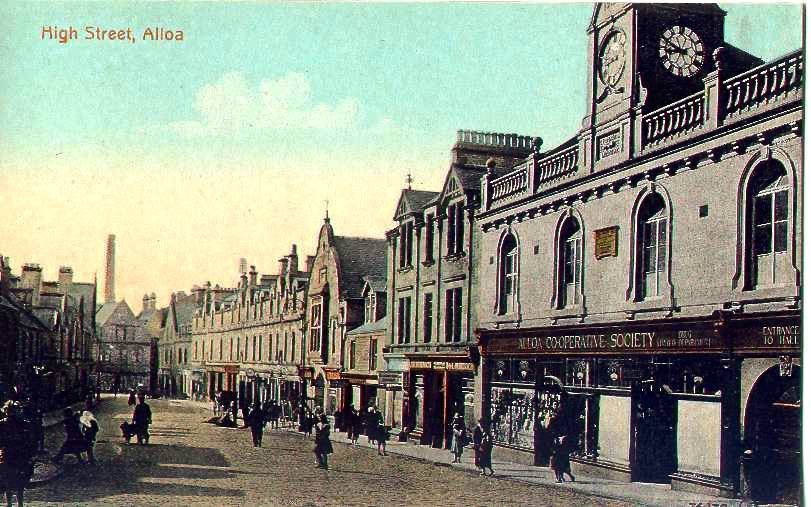Welcome to Clackmannanshire.Scot. The site aims to celebrate the county of Clackmannanshire via its towns, villages and community and to shine a light on Clackmannanshire's history and attractions for tourists and residents alike - you may be surprised by what's on offer.
This time we are looking at an historic Alloa building, the Alloa Corn Exchange :
Alloa Corn Exchange
The Alloa Corn Exchange building was envisaged to act as the local corn exchange and also to provide a large hall for the many shows and events in the town. By the 1850s there was only one public hall of any note, known as the Assembly Room. It was built as a second storey above the Parish School. James Archibald commented "It was simply a big room, and if there was anything attractive on, it was easily filled to suffocation." Visiting acts had given their opinion that something better should be done, and at last in the early 1860s a company was formed to build a hall to do duty as a Corn Exchange and also the ordinary purposes of a hall - Alloa Corn Exchange Ltd was formed in 1863 to provide a hall, with staff and facilities, for the purpose of holding markets. The markets were to sell not only grain but also other produce and goods and the hall was to be available for public meetings.^
The company acquired an old property in the middle of High Street, (the last thatched roof building in Alloa) which was demolished, and thereon built the Corn Exchange, which was opened in 1862/3. It was certainly much more commodious than the Assembly Room. At first it was cold and draughty, but this was as far as possible remedied afterwards.

Alloa Corn Exchange Building - Pic. Facebook
In the 1860s, 1870s, and most of the 1880s it was very busy, and must have paid the company well all that time, as in it were held concerts, theatrical performances, bazaars, balls, public meetings, etc. At this period, especially in the 1870s, the Alloa Musical Association was in the very zenith of its fame and popularity.

Postcard image of Alloa High Street, showing the Corn Exchange building in the centre of the picture.
Alloa Corn Exchange gets a rival
As the years went on and the town branched out in all directions, the question of a new hall came again to the fore as a pressing problem. But there it stuck, as it was well enough understood that any company building a hall need not expect much or anything of a dividend back again. Soon though, John Thomson Paton intimated that he was willing to erect a Town Hall, under very easy and necessary conditions, the principal one being that the town adopt the Public Libraries' Act, - a condition, it need hardly be said, that was at once endorsed by the ratepayers at a full meeting in the Corn Exchange.
The conditions being ratified, it was only a question of time when the town found itself with a magnificent Town Hall, with a splendid organ in it, a well equipped reading room, an extensive lending library, a valuable reference library, and a series of classrooms for scientific and art studies.
On the night of 14th December, 1888, the Town Hall was officially opened.
A new use for the Corn Exchange
This fabulous new Town Hall building did however spell the end of profitability for the Corn Exchange, as many of the events now moved to the Town Hall for the larger capacity and better facilities. The decision was taken to wind up the corn exchange company in 1901 and the final meeting took place in 1902. By late 1902, the building had closed and was later converted into 'The Picturedome' cinema, which opened in 1915. It closed again in 1924, was refurbished during 1925 and opened as the the 'Central Picture House' on 9th January 1926.
With the downturn in cinema audiences contributing to it's closure in 1962, the building was demolished and a Lipton's supermarket built in it's place, later becoming MacKays before their rebrand to M&Co.*
References:
^Stirling Council Archives
Alloa 60 Years Ago - James Archibald
Alloa in the 1920s - W. Scott
Google Earth
*cinematreasures.org
If you would like to get in touch, please email

